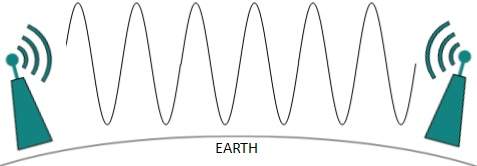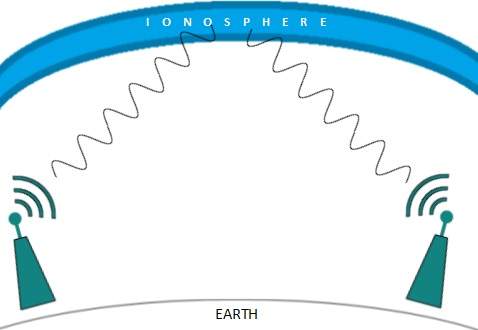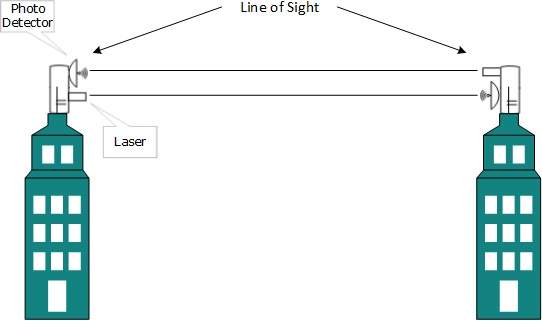Essential topics to be covered in this session
- Wireless transmission is a form of unguided media. Wireless communication involves no physical link established between two or more devices, communicating wirelessly.
- Wireless signals are spread over in the air and are received and interpreted by appropriate antennas.
- When an antenna is attached to electrical circuit of a computer or wireless device, it converts the digital data into wireless signals and spread all over within its frequency range.
- The receptor on the other end receives these signals and converts them back to digital data.
- A little part of electromagnetic spectrum can be used for wireless transmission.

Radio Transmission
- Radio frequency is easier to generate and because of its large wavelength it can penetrate through walls and structures alike.Radio waves can have wavelength from 1 mm – 100,000 km and have frequency ranging from 3 Hz (Extremely Low Frequency) to 300 GHz (Extremely High Frequency).
- Radio frequencies are sub-divided into six bands.
- Radio waves at lower frequencies can travel through walls whereas higher RF can travel in straight line and bounce back.
- The power of low frequency waves decreases sharply as they cover long distance. High frequency radio waves have more power.
- Lower frequencies such as VLF, LF, MF bands can travel on the ground up to 1000 kilometers, over the earth’s surface.

- Radio waves of high frequencies are prone to be absorbed by rain and other obstacles. They use Ionosphere of earth atmosphere.
- High frequency radio waves such as HF and VHF bands are spread upwards. When they reach Ionosphere, they are refracted back to the earth.

Microwave Transmission
- Electromagnetic waves above 100 MHz tend to travel in a straight line and signals over them can be sent by beaming those waves towards one particular station.
- Because Microwaves travels in straight lines, both sender and receiver must be aligned to be strictly in line-of-sight.
- Microwaves can have wavelength ranging from 1 mm – 1 meter and frequency ranging from 300 MHz to 300 GHz.

- Microwave antennas concentrate the waves making a beam of it. As shown in picture above, multiple antennas can be aligned to reach farther.
- Microwaves have higher frequencies and do not penetrate wall like obstacles.
- Microwave transmission depends highly upon the weather conditions and the frequency it is using.
Infrared Transmission
- Infrared wave lies in between visible light spectrum and microwaves.
- It has wavelength of 700-nm to 1-mm and frequency ranges from 300-GHz to 430-THz.
- Infrared wave is used for very short range communication purposes such as television and it’s remote.
- Infrared travels in a straight line hence it is directional by nature.
- Because of high frequency range, Infrared cannot cross wall-like obstacles.
Light Transmission
- Highest most electromagnetic spectrum which can be used for data transmission is light or optical signaling. This is achieved by means of LASER.
- Because of frequency light uses, it tends to travel strictly in straight line.Hence the sender and receiver must be in the line-of-sight.
- Because laser transmission is unidirectional, at both ends of communication the laser and the photo-detector needs to be installed.
- Laser beam is generally 1mm wide hence it is a work of precision to align two far receptors each pointing to lasers source.

- Laser works as Tx (transmitter) and photo-detectors works as Rx (receiver).
- Lasers cannot penetrate obstacles such as walls, rain, and thick fog. Additionally, laser beam is distorted by wind, atmosphere temperature, or variation in temperature in the path.
- Laser is safe for data transmission as it is very difficult to tap 1mm wide laser without interrupting the communication channel.









DCN plays a vital role in wireless transmission by improving data routing efficiency. When it comes to object detection, the YOLOv8 vs DETR comparison highlights YOLOv8’s speed and DETR’s accuracy and transformer-based approach.
ReplyDelete